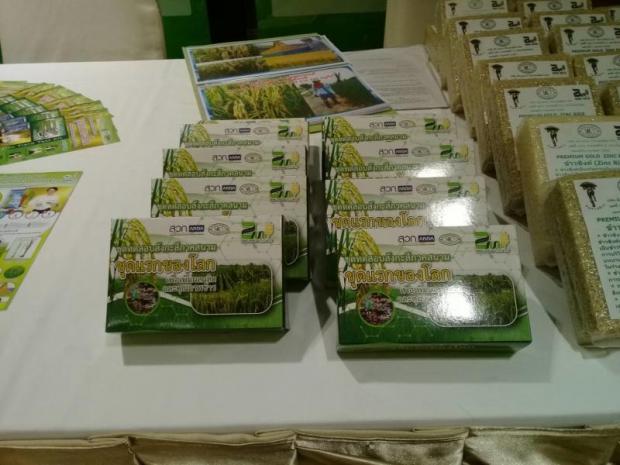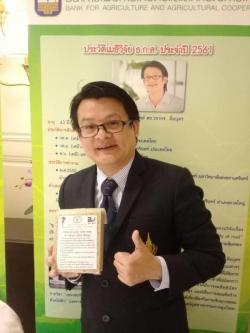
The way out of long-standing volatile crop prices for Thai farmers lies in elevating the quality of Thai rice to premium-grade grains. The innovative "rice plus zinc" could hold the key.
"While Thailand is the world's leading rice exporter, Thai rice yield per rai is particularly low," said Warakorn Limbut, a lecturer in applied science at Prince of Songkla University. "Millions of farmers put labour into millions of rai in order to feed the world population."
Thai rice production has 4.6 million families growing rice on 5.6 million rai. Provided that one family has 4-5 members, this brings the total estimate to 20 million rice farmers nationwide.
Increased rice yields, lower production costs and premium rice for the high-end world market are all parts of the solution, Mr Warakorn said, adding that farmers should be pushed towards improving their quality of life.

Mr Warakorn is a proponent of zinc intake to improve health.
Mr Warakorn, who earned a doctoral degree in chemistry from Prince of Songkla University, dreams of this. He has dedicated over a decade to researching and experimenting with rice products fortified with zinc.
He said zinc is a secondary macronutrient for the human body that helps stimulate the activity of at least 200 enzymes. As an ingredient in energy drinks, or even in candy, a certain amount of zinc intake will make a person feel re-energised.
Similarly, in the plant biochemical process, zinc stimulates not only enzymes, but also microorganisms in soil. If zinc is added during the rice plantation process, the rice grains produced will have zinc content.
Farmers found that rice planted on plots that use zinc organic fertiliser grow faster and stronger than with chemical fertilisers, Mr Warakorn said, noting that this is because zinc facilitates the activity of soil microorganisms, leading to loose and fluffy soil, and helps plants absorb minerals essential to growth.
Having received domestic and international prizes from this research project, plus the related Zinc Field Test Kit to Improve Quality of Rice, Mr Warakorn was recently awarded research funds by the Bank for Agriculture and Agricultural Cooperatives.
From experimenting on plots in 17 provinces across the country, he found that adding zinc to organic fertiliser used in rice fields helped generate higher rice yields per rai at much cheaper cost than chemical fertilisers.
For instance, the yield from an experimental plot in Ang Thong province reached 1,300 kilogrammes per rai, compared with 660 kg/rai in the past. The yield in Suphan Buri doubled, from 700 kg/rai to 1,400 kg/rai. Whereas, experimental rice fields in southern provinces generated up to 550 kg/rai (after 30% damage from rodents), compared with the standard 350 kg/rai.
Even though the use of chemical pesticides decreased, the rice crops became more resistant to disease and the cooked rice was deliciously fluffy and soft.
Moreover, the recently patented Zinc Field Test Kit to Improve Quality of Rice is the first zinc-testing machine for soil in the world that can detect zinc in the form that plants absorb for photosynthesis to generate growth and produce carbohydrate molecules.
The machine is headed for commercial production with support from a company that kick-started the research.
The company will purchase rice with zinc from farmers for export, particularly to China.
Mr Warakorn said that while zinc can be normally ingested from meat and seafood, such as shellfish and meat, eating rice plus zinc is particularly beneficial for certain groups such as pregnant women and children whose bodies require extra zinc.
Adding zinc to the plantation process has been done in many countries, including India and Pakistan, under the guidance of the International Zinc Association and the World Health Organisation.
The International Zinc Association states that the number of dying children in undeveloped countries is as high as 450,000, partly due to a weak immune system caused by zinc deficiency.
People in these countries in particular consume a staple diet of grains and cannot afford meat or seafood.
Although overconsumption of zinc can be toxic to the body, the quantity of zinc added during the planting process is minimal -- under 18 milligrammes per kg. This is the optimal amount, as the level of zinc in natural rice is 8-15mg/kg.
In addition, rice plants have inherent mechanisms to curtail excess zinc in rice grains. Rice plants also tend to wither if farmers add too much zinc.